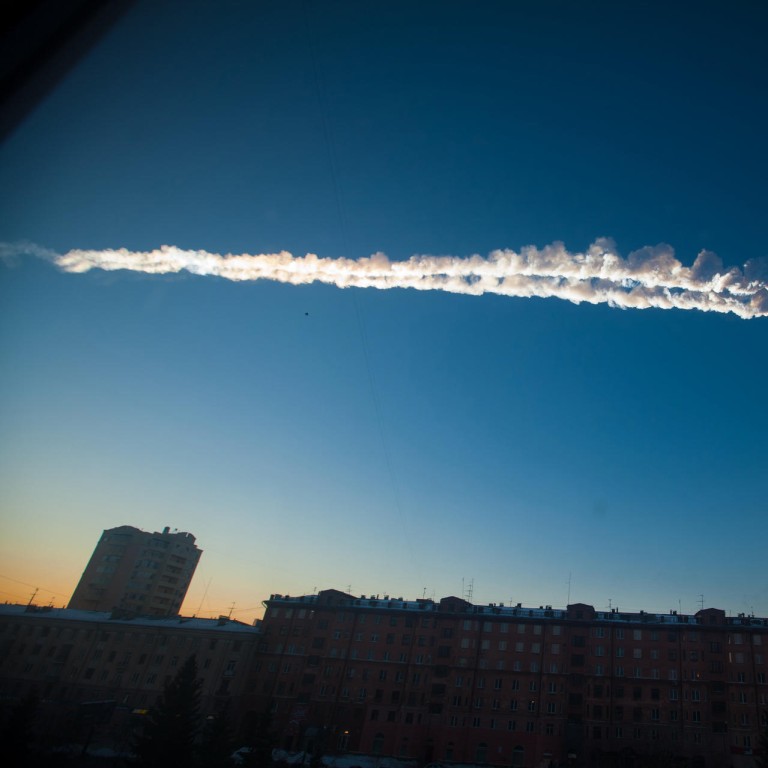
The sky's the limit for trailblazing meteors
Meteors may be leaving far more "kiss marks" - their blazing trails - on the earth's atmosphere than previously believed, says a new study by Chinese scientists.
Meteors may be leaving far more "kiss marks" - their blazing trails - on the earth's atmosphere than previously believed, says a new study by Chinese scientists.
The researchers have picked up numerous radar echoes of meteor trails at altitudes as far out as 170km above the earth's surface - more than 30 per cent higher than was previously thought possible for atmospheric density to produce the effects.
Meteroids are objects travelling through space. They become meteors when they enter the earth's atmosphere, typically at 20km/s, producing enough friction to cause streaks of light from aerodynamic heating. Remnants of meteoroids that withstand the blast-furnace-like conditions of atmospheric entry to hit the ground are called meteorites.
"We are very excited by the findings," said Dr Li Guozhu , an associate researcher at the Chinese Academy of Sciences' Institute of Geology and Geophysics and lead scientist on the international study.
"A long-standing debate can now be settled."
A meteor had to come "intimately close" to leave a mark in the sky, at the boundary set -arbitrarily, it seems - at 130km above the earth. The limit was set partly because of a lack of observable data at higher altitudes, and also by laws of physics.
Only at 130km is the atmosphere dense enough to generate heat high enough to vaporise meteors - most of which are composed of extraterrestrial nickel and iron - leaving behind trails that are detectable by sensitive radar.
Some scientists have argued that meteoroids' first contact particles associated with the earth could happen at higher altitudes, but they lacked solid evidence to prove their hypothesis.
Li said the radar echoes they picked up at 170km looked no different from those observed closer to the earth.
"They had the typical shape of a meteor trail, thick in the head and thin at the tail," he said.
But the physics involved in creating a high-altitude meteor trail was "fundamentally different", the researcher said.
Beneath 130km, a trail is generated by the heat of particle collision; but any higher than that, there are not enough atoms to generate the necessary friction to raise temperatures enough to ignite the meteor.
A possible explanation is the "stripper" hypothesis.
"A meteoroid may hit wandering particles at such high speed that some of its matter is stripped off its surface, like a person taking off his clothes. This is a cold process, but equally exciting nevertheless," Li said, adding that the idea was backed up by an interesting phenomenon.
The scientists' observations, published in the academic journal in October, had significantly expanded the room for "intimate contact" between the earth and meteors, Li said.
Increasing the radius by a third more than doubles the volume of a sphere.
"If this is true, it means far more extraterrestrial substances have arrived on our planet than was previously estimated," Li said.
"After drifting in the atmosphere for a while, these substances will eventually fall to earth."
Alien substances brought to the earth by meteorites and other small celestial bodies were of huge interest to scientists because they could shed light on many issues - not least the origins of life on our planet. Some scientists suspect life was kick-started by certain organic matter dropping from the sky.
Li's team made the observations with a very-high-frequency radar array and high-precision positioning devices.
"These events happen regularly. We can record five or six each day," he said.
The Chinese team is aiming higher still.
The radar array, installed in Sanya , Hainan island, will be upgraded to gaze deeper into space with higher sensitivity, Li said.
The team would undertake a new round of observations next year to scan for possible meteor trails between the 200km to 400km altitude band, the researcher added.

